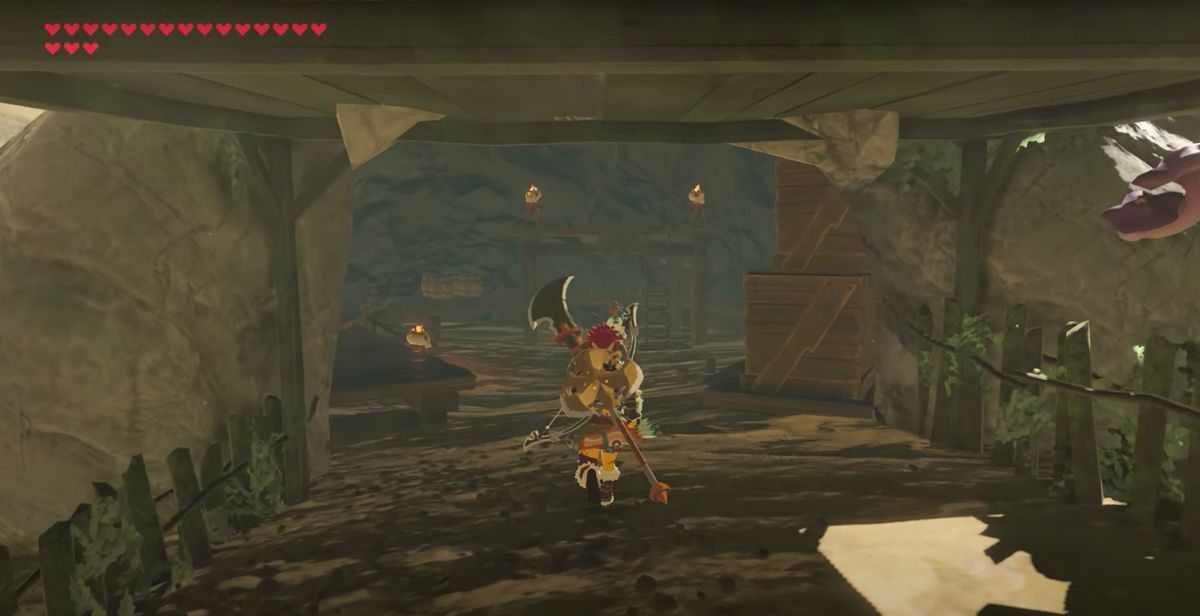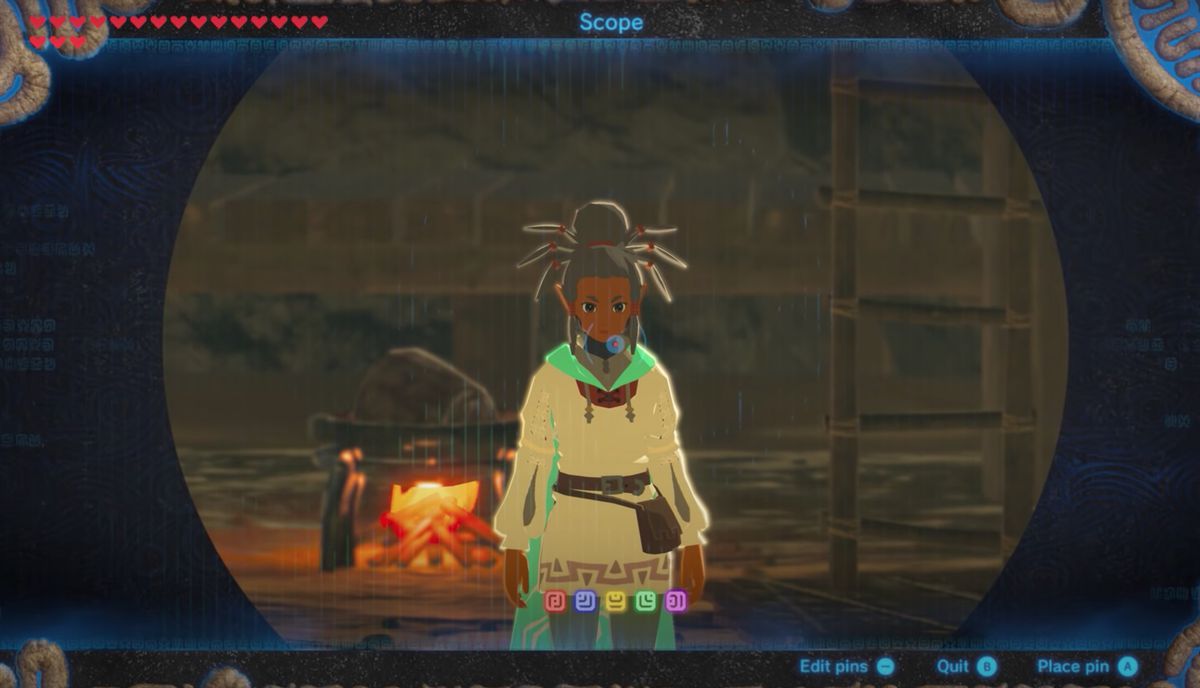Breath of the Wild mod Second Wind is an ambitious, massive fan project

After nearly a year since the last update for The Legend of Zelda: Breath of the Wild‘s still-unnamed sequel, Nintendo recently announced it will delay the game’s release until spring 2023. It seems that good things are for those who wait.
And then there are Zelda fans who decide to make their own games instead.
Take, for example, Jannik Wagner, who goes by Waikuteru online. He and others have used their coding skills to embed mods in Breath of the Wild and share them with the Zelda community — with mods ranging from mechanic enhancements to outlandishly silly avatars. At first, making Breath of the Wild mods provided a way for Wagner to extend the enjoyment of his favorite game. But now, the modder’s work is gaining enough online attention to make him into something of a fan icon.
The Second Wind super-mod
Second Wind, a hobbyist project that’s powered by Wagner and over 50 other Zelda fans, is the mother of all Breath of the Wild mods. Rivaling even Nintendo’s successful Champion’s Ballad DLC, this super-mod is meaty enough that Nintendo could sell it and fans wouldn’t bat an eye. This mod adds new content, including bosses and weapons, quests and an unexplored town.
A close friend of Wagner approached him to take over the project’s programming. Wagner was responsible for the programing of background music and sound effects, camera work and game events. Last year, he created a new mini-project in Second Wind, a potion shop with an NPC called Nancy. You can buy elixirs, which are items that you program with rupees or materials from the shop. The effects of elixirs multiply if purchased in the evening. His other Second Wind mini-mod is a town called Ordon Village, complete with its own main and side quests.
While accustomed to flying solo, Wagner describes working with 50 modders as “a bit different,” but a good experience. “We used GitHub to make the process easier to pull the latest commits [or coded file updates] and then worked with [the files],” he says. “I also worked together with people I mostly knew, so I had a good connection!”
Based in San Francisco, GitHub is an online software platform service used by developers around the world. It’s not open source, but the company encourages hobbyist developers to use its free option to openly share and store Git code like a public backup service.
Shortly before the publication of this story, Wagner said that Second Wind in its entirety was about 60% finished. While there are still more things his group would like to add to it, players can experience the phenomenon via his Discord server. Wagner says that the development of Second Wind has been delayed due to the pandemic’s effects on the personal lives of several modders. He is hopeful that Second Wind will be finished soon, however. And with his primary work on the project done, he continues to experiment with his own Breath of the Wild mods in the meantime.
From player to modder: one fan’s love letter to game design

Image: Jannik Wagner
To many in the online fan community, Wagner’s Breath of the Wild mods aren’t simply part of the niche-within-a-niche modding scene. These mods are overbuilt and over-the-top, but they also have a fun attitude. One could say that Wagner was even a founder of Breath of the Wild‘s exploding modding culture.
Though Wagner is best known for his work on Second Wind, his passion for video games didn’t begin that way. Modding wasn’t on his mind when he got his hands on a copy of Breath of the Wild on its release date in 2017. “I didn’t think much of it since I wasn’t the guy [who did] a lot of stuff with the PC besides playing League of Legends,” he says. The game was a fun casual experience for him.
But when Wagner heard that the game could operate with no frame drops on a Wii U emulator called Cemu, he grew curious. But what if Zelda could have more options?
In 2018, curiosity got the better of him. Wagner experimented with Breath of the Wild on Cemu, as he didn’t want to risk adversely affecting his console. The process proved to be difficult. Legend of Zelda game data is notorious for being tough to swallow. This open-world mammoth called Breath of the Wild was a whole other beast. “I looked into Cemu and had to realize that my PC was not capable of running this game since it didn’t even reach locked 60 [frames per second] on the easy-to-run League of Legends,” he says. He didn’t let that stop him. Armed with research, he built a new gaming PC from scratch that summer with a powerful i7-8700K CPU engine. He tried again.
The results turned out far better than he anticipated.
“I booted up the game with some performance and graphic-enhancing mods and was [blown away] by the gameplay,” says Wagner. “Just awesome!”
From that point on, he was hooked on modding. He tweaked and tinkered to his Hylian heart’s content, adding mod enhancements to Breath of the Wild‘s performance and graphics, and then modded extensions to the game itself. He says, “They must have stimulated something special in my,” “New content for a beloved Nintendo game […] whenever you want, and you can decide the content and quality […] It just sounded like a dream!”
The pipe dream comes to life
Wagner made many of his own custom Breath of the Wild mods before Second Wind, including several inspired by Skyward Sword, a Ghirahim boss fight, a time trial minigame, and even a throwback stage of Whomp’s Fortress from Super Mario 64. He fondly remembers the first mod he made, the Skyward Sword Complete Music Overhaul. In that project, he modded over 200 Skyward Sword music and sound effect files into Breath of the Wild, all for the sake of nostalgia.
“It was the first time that I have invested so much time in such a project. […] It made players happy and gave them a new experience,” he says. “I realized that this shouldn’t be it and more had to come.”
And come it did, in the form of a map editor during the summer of 2019. With it, Wagner discovered how to create his own custom Zelda dungeon in Breath of the Wild, or at least as much of a dungeon as he could with the game’s limited shrine assets. He says, “It was quite difficult for me to design new objects and I only really worked with squares.” But with a little ingenuity, he learned he could import a Skyward Sword game map and create a custom shrine. From there, the Knight Academy, the first mod Wagner showcased on his YouTube channel, was born. He had fewer than 100 subscribers at the time. As of this story going live, he has over 26,000.
It takes him, on average, one to two months to mod a custom dungeon. Wagner was eventually able to modify original items. He imported Ocarina of Time‘s Lon Lon Ranch as a test, and the results were stunningly accurate to the original aesthetics — and even improved upon. His favorite mod is the Breath of the Wild Randomizer, a project he resumed last year after his involvement with Second Wind. He’s spent hundreds of hours on that project and counting.
Breathing new life into an acclaimed favorite

Image: Jannik Wagner
Modding is fast becoming a popular activity in gaming culture. Some companies like Bethesda have embraced fan modding communities as gold mines for audience engagement and content value. Modding is touted by its potential to help programmers in today’s tech-intensive industries.
Like many Zelda fans, Wagner hopes that the sequel to Breath of the Wild will reprise much-needed traditional dungeons and unique items. “I hope that new abilities will allow for creative puzzles,” he says. The patented avatar mechanics spotted by the public last year have certainly caught his eye. “We saw that Link can traverse through terrain, which can result in pretty nifty puzzles, I believe.” Wagner already plans to mod the sequel after he has played the game.
Eagerness aside, could modding be something that he might pursue even harder in his future?
“No doubt,” says Wagner. “It’s very likely I will join and help out on Second Wind once again when I have not too much else on the list! It was a fun experience every time I was involved!”
Source: www.polygon.com